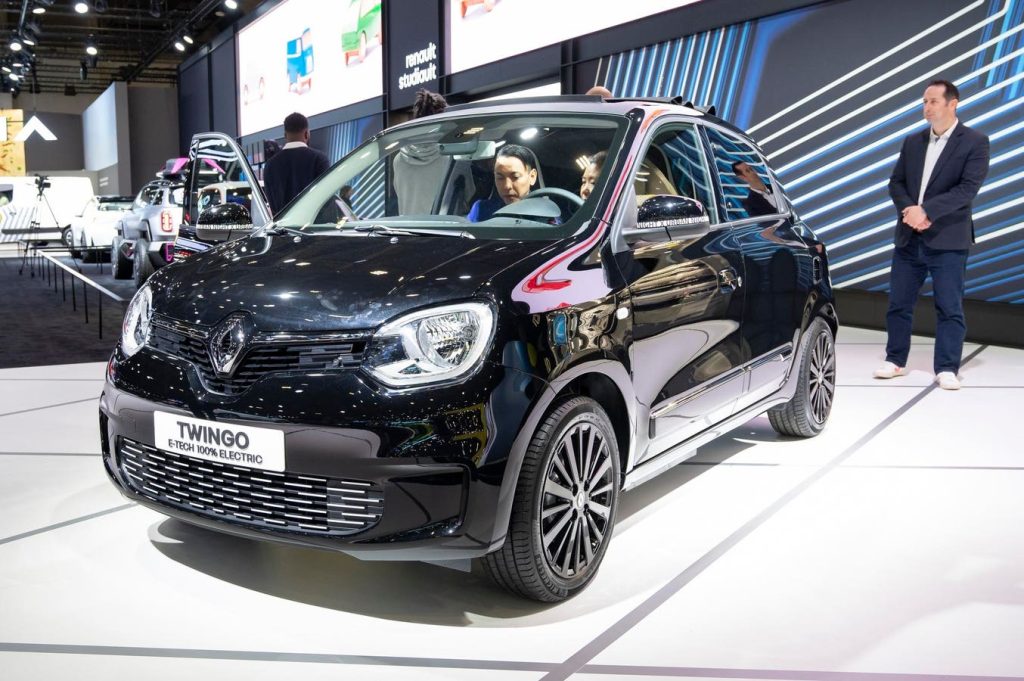Renault’s plans to compete in the electric car market with its Ampere subsidiary sound impressive but potential investors in its share offering next year will be looking nervously at the threat from China.
Renault, in which France has a 15% stake, has impressed investors with its moves to restore profitability, reform its alliance with Nissan, and live without its Russian subsidiary but they are not so sure about its plan to float off Ampere next April or May.
Meanwhile, the threat from Chinese electric vehicles looks deadly for all European contenders when the current plateau in sales ends towards 2025. As EU rules force the mass market to go all-electric, the plans from Renault and other European manufacturers look thin.
Analysts say Renault has ample funds to finance Ampere’s plans. The float plan risks leaving Renault with a complex holding company structure which may mean shares would require a discount to attract stock market investors.
Renault’s plans to bring to market a so-called “affordable” sub-$22,000 electric car, the Legend, formerly known as the Twingo, may reach the market simultaneously as China introduces its affordable EVs, which arguably could be priced closer to $15,000. Renault’s plan to introduce a wide range of EVs will also be launched into a market where, according to investment bank UBS, Chinese vehicles have a 25% cost advantage. Other experts put the advantage closer to 50%.
That might weigh on the minds of potential investors in Ampere when it comes to the market next year.
Renault will introduce its first “software-designed vehicle” via Ampere in 2026. Renault said Ampere EVs will reach price parity with internal combustion engine (ICE) vehicles faster than the (presumably European) competition with 40% cost cuts by 2027-2028. The EV range will comprise the Renault Megane E-Tech, already on sale, the Scenic E-Tech (2024), followed by the Renault 5, Renault 4, the sub-$22,000 Legend (Twingo), and two more vehicles.
Ampere is charged with increasing sales to €10 billion ($11 billion) by 2025 and more than €25 billion ($27 billion) by 2031. It will break-even in the second-half of 2025, and sell 1 million vehicles by 2031, according to the plan.
In the first nine months of 2023, Renault and its Dacia value brand sold 925,000 cars and SUVs in Europe, up 20% on the same period last year, for a market share of just under 10%, according to the European Automobile Manufacturers Association.
Bernstein Research liked the plans for Ampere, which it said put Renault in a good place to compete with the best electric cars coming to Europe.
“But we continue to question the need for the IPO (initial public offering, or sale of shares), which is still on track for the first half of 2024,” Bernstein said in a report.
“The company has a clear plan backed up by concrete technology to reduce costs by about 40% over the next five years,” Bernstein said, but it thought the IPO will make governance ”unavoidably convoluted, with service revenues being split, shared production lines, financial services, etc.”
Renault said it had ample cash to fund the plans, according to Bernstein.
Reuters Breaking Views columnist Pierre Briancon said Renault’s “lofty goals” for Ampere will require impeccable execution and agreed that an IPO wasn’t necessary. Renault’s claim that the IPO would value Ampere at between €8 billion ($8.8 billion) and €10 billion ($11 billion) looks ambitious with investment researcher Jefferies suggesting €7 billion ($7.7 billion) would be more realistic. Investment bank UBS has suggested a value of no more than €4 billion ($4.4 billion), according to Briancon.
The timing of the Ampere announcement comes after news that the initial surge of electric car sales had plateaued. In the U.S., Ford Motor cut sales targets for electric vehicles and slashed production of the Mustang Mach E. GM dumped its sales targets. VW and Mercedes problems show growth is slowing in Europe, although they will regain momentum after 2025, according to forecasts.
As the Financial Times put it – “the early adopters had all adopted”.
EV sales in Europe are still expected to accelerate and the current level of around 2 million a year is expected to hit more than 9 million by 2030.
That assumes there will be a mass market for EVs and vehicles that average earners can afford. Currently such a vehicle does not exist, and even the Legend would be too expensive.
Analyst Matt Schmidt of Germany’s Schmidt Automotive Research said Renault’s small ICE cars which sell big in poorer Southern Europe markets like Spain, Italy, Portugal and Greece could be badly exposed when the switch to electric cars gathers momentum.
“If the Chinese brands come in with BEVs at a similar price to ICEs in these markets they could cause a huge swipe at Renault Group’s regional market share. A small car priced at €20,000 ($22,000) still isn’t affordable for that type of market and the Chinese will be all over it like a rash with actually affordable models soon, potentially even after tariff increases,” Schmidt said.
China has already developed very cheap electric city cars. The Wuling Hongguang Mini notched up sales of 1.1 million between being launched in 2020 and February 2023. The Wuling Bingo and BYD Seagull are the latest electric city cars which might be refined for the European market.
But the EU’s current subsidy probe into Chinese car sales could persuade its manufacturers to concentrate on middle and premium markets where profits are much higher. Attacking the bottom end of the market wouldn’t make big profits, but Chinese involvement might well push European mass carmakers over the financial edge. That would leave the question open; if Europe’s average wage earners are forced out of new cars, what would be the political repercussions?
Stellantis CEO Carlos Tavares put it this way.
“I can’t imagine a democratic society where there is no freedom of mobility because it’s only for wealthy people and all the others will use public transport,” Tavares has said.
Read the full article here










